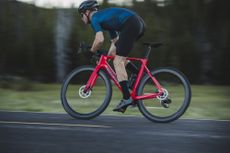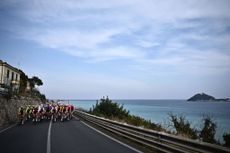New Cannondale Synapse SmartSense: smart tech comes to road cycling
Reimagined carbon endurance bike gets integrated radar, lights and a single battery - all the details plus our 'first ride'
- (opens in new tab)
- (opens in new tab)
- (opens in new tab)
- Sign up to our newsletter Newsletter
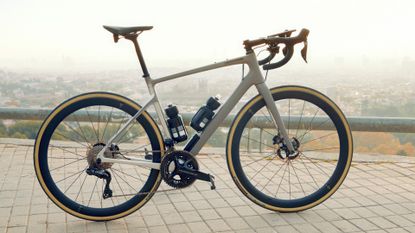

The first Cannondale Synapse was launched 15 years ago, but it’s only with the launch of this latest SmartSense-equipped version that it is literally living up to its name, connecting formerly discrete electronics into a single ecosystem.
A Synapse is, according to the Oxford dictionary, a gap between two nerve cells across which electrical impulses are conducted.
We’ve seen ‘smart’ integration built into e-bikes (opens in new tab) and concept bikes, but this is the first time a major road bike (opens in new tab) brand has fully committed to introducing it into one of its big-selling models.
The new Synapse Carbon is designed to run what Cannondale is calling SmartSense technology - a system of lights and radar that actively communicates with the rider, bike, and surroundings and is powered by a single battery.
SmartSense is, according to Cannondale, designed to provide “enhanced awareness while also creating heightened visibility so the rider can more effectively see and be seen.”
Cannondale says with SmartSense it has focused on confidence and convenience, designed to make road riding more enjoyable for experienced riders, more inviting for new riders and more convenient for everyone.
Cannondale Synapse Carbon: SmartSense explained




So what is SmartSense exactly? It’s designed to run as a single system, but it consists of four distinct elements: rear-facing radar, smart lights, a single battery and a wheel sensor that activates the whole system. Everything is configurable via the Cannondale app.
The radar, a version of Varia developed with Garmin, constantly scans for rear approaching traffic and can signal the speed, distance, and number of cars through audible and visual alerts either on the app, the Varia LED display unit that comes with the bike or a compatible head unit. Although it’s Garmin branded, SmartSense radar (like all Garmin Varia radar) is also compatible with other head units including Wahoo, giving the user a totally of three display options.

The front and rear lights (opens in new tab) were developed with Lezyne. The Cannondale press release calls them daytime running lights but the 350-lumen front is easily bright enough to be used on unlit lanes for night riding (more on that later). The rear light (85 lumens for the international version of the lights), which has an optional brake light function, can adjust brightness according to changing light conditions, or brighten as traffic approaches from the rear. You configure lights and radar settings through the app.

The battery mounted at the bottom of the down tube is the single power source for the lights and radar. It unclips from its cradle for charging. It can also be used as a USB-C charging source when it’s disconnected.
The fourth element is the Cannondale wheel sensor, which automatically activates SmartSense with a spin of the front wheel.
Cannondale quotes a battery life of 2h 45min with everything on full, with a time of three hours to charge the powerpack. Or "20ish hours in lowest battery saver mode." When I rode it for the first time for 1h 20min (plus a bit of faffing) it used about 40% of the battery. If you were intent on ‘pulling an all-nighter’ it would be easy to take a spare battery or two with you - something you couldn’t do with standard rechargeable lights.
All-new Cannondale Synapse Carbon frame
Of course the new bike is not just smart tech added to the previous Synapse (opens in new tab) - Cannondale has completely redesigned the Synapse. That said, the geometry remains the same - higher at the front for a more comfortable upright position. Cannondale says it represents the perfect balance between racy, forward-leaning efficiency and upright comfort.
The new frame features the ubiquitous dropped seatstays and it now has clearance for 35mm tyres compared to 32mm for the outgoing Synapse. With mudguards (it has mudguard eyes) there’s space for 30mm tyres.
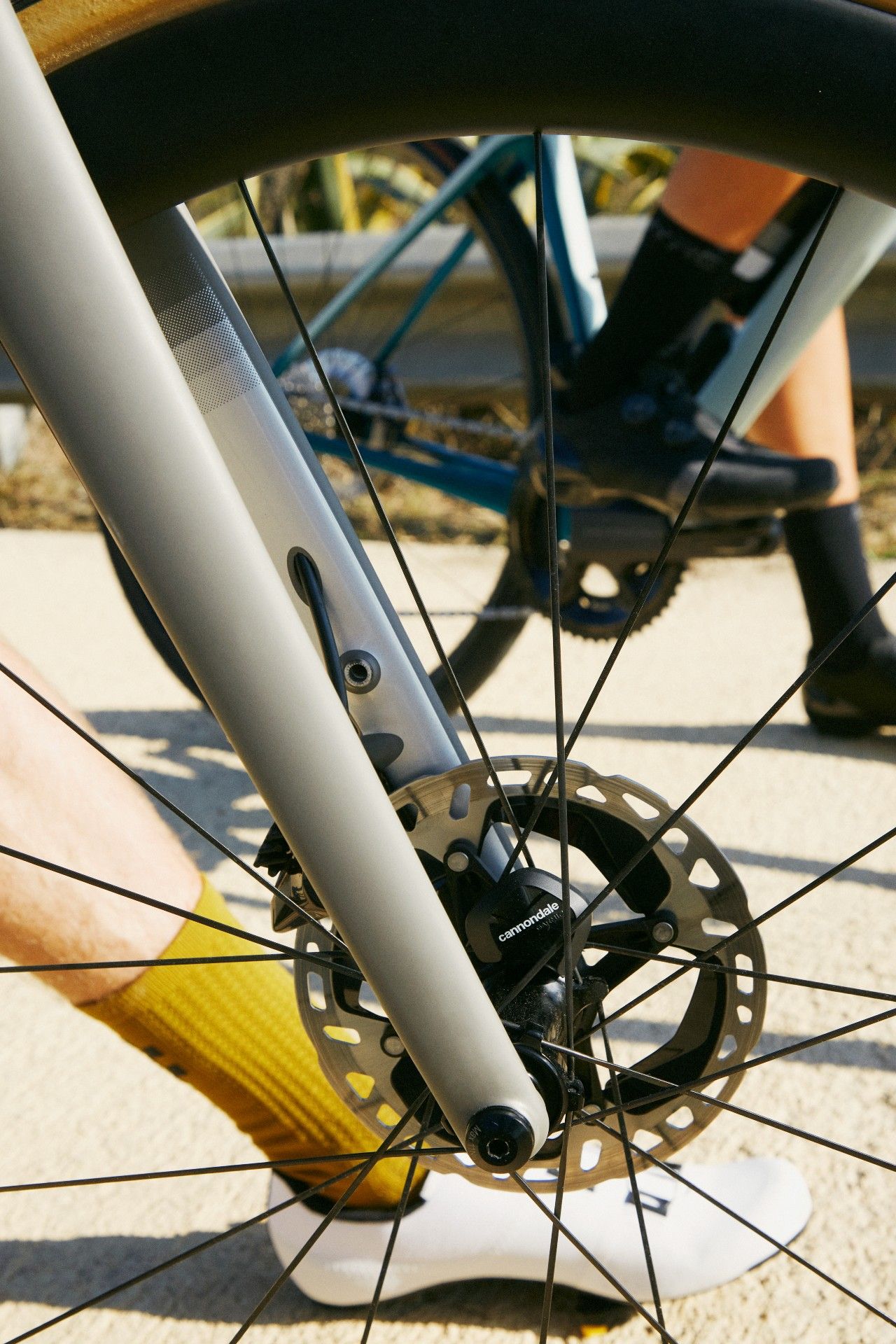
Cannondale says it has improved vertical compliance by eight percent and claims the new Synapse supplies the smoothest ride yet.
The US brand also says the new bike is faster, thanks to improved aerodynamics (though no wind tunnel data was supplied). Despite the improvements, the frame weight is the same, according to Cannondale.
Cannondale Synapse Carbon pricing and specs
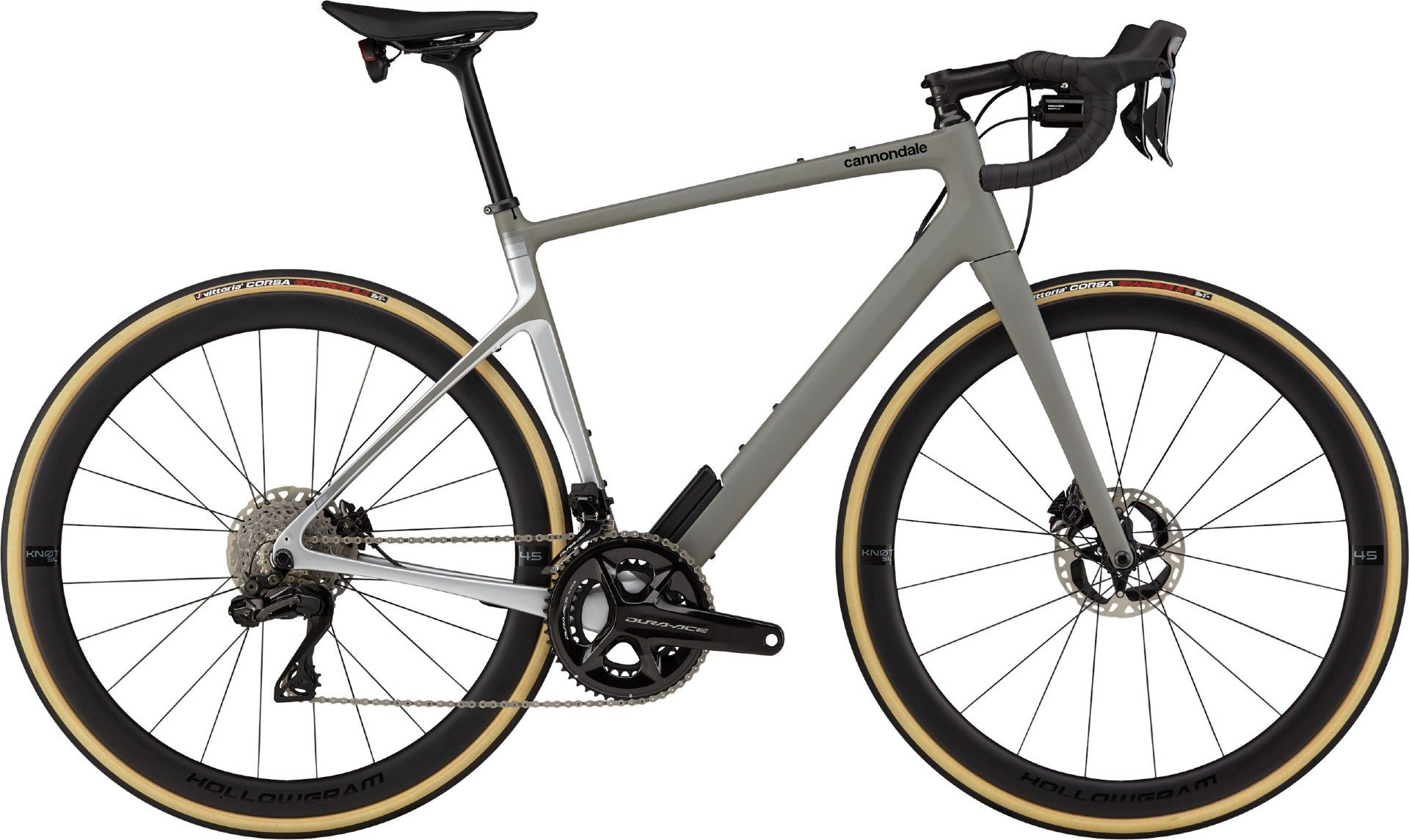
There are six models in the range (depending on region) all based on the new Synapse Carbon frame. R, L, and E stand for radar, lights and electronic gears respectively.
Synapse Carbon 1 RLE Dura-Ace Di2, Hollowgram 45 SL Knot wheels £9,000/$9,000
Synapse Carbon LTD RLE GRX 815 Di2, Hollowgram 45 Knot wheels £6,750/$7,000
Synapse Carbon 2 RLE Ultegra Di2, Fulcrum Rapid Red 500 wheels £5,800/$5,500
Synapse Carbon 2 RL mechanical Ultegra, Fulcrum Rapid Red 900 wheels £4,000 (UK and Europe only)
Synapse Carbon 3 L 105, RD 2.1 wheels £3,200/$3,300
Synapse Carbon 4 Tiagra, RD 3.1 wheels £2,400/$2,400
Interestingly, although the bike has been comprehensively updated Cannondale - like other major brands including Specialized - has reverted to a threaded BSA bottom bracket instead of the BB30 of the older Synapse (opens in new tab). The seatpost is a standard 27.2mm with an ordinary unhidden clamp while the bar and stem are separates. There’s been a growing demand for the return of more user-friendly standards and it’s great the bike industry is listening.
Finally, it comes with mounts for a top tube bag and two water bottles, making it a viable bikepacking tool - or an excellent tourer for the more traditional.
Cannondale says the new Synapse is “the right bike for most riders,” that it goes “right up to the edge of the gravel world” and that it is “easy to ride hard on all kinds of road.”
You can justifiably call it a jack of all trades and Cannondale clearly would not dispute that.
It’s initially tempting to pigeonhole it as a perfect commuter bike, but for one thing it’s pretty expensive for that (see boxout for details of the range and prices) and for another, using lights is no longer for commuters: go out on a weekend and you’ll see most road riders using lights whatever the weather, time of day or even season.
The Cannondale Synapse Carbon is the first Cannondale bike to be designed for the SmartSense ecosystem, but it won’t be the last. Cannondale says the Topstone Carbon will be next to be SmartSense equipped, with most Cannondale road models expected to include some form of SmartSense compatibility in the future.
At the moment it’s something of a shame that Shimano Di2 and Cannondale SmartSense run off separate batteries - how cool would it be if you had one powerpack for your gears, lights and radar? Cannondale says it approached Shimano to discuss this, but Di2 is a totally closed platform and at the moment Shimano is unwilling to commit to the project despite being “quite interested”.
Cannondale says it knows that this level of full integration is what consumers want, so will keep pushing - and says to stay tuned.
Cannondale Synapse Carbon Smartsense 2RL: first ride

We were sent the Synapse Carbon 2 RL - i.e. radar and lights but no electronic gears. It’s third from bottom in the range and costs £4,000.
In this ‘beetle green’ colourway it really pops. Under the light the green turns a kind of coppery bronze.
I have to admit I was expecting the SmartSense to be more integrated. We’re used to seeing concept bikes and e-bikes with built-in lights - and there was a Trek Lync commuter bike with integrated, internally wired lights as long ago as 2014.
However, the new Synapse is all about convenience as well as confidence, remember, and built-in lights could end up being as annoying as integrated ‘cockpits’.
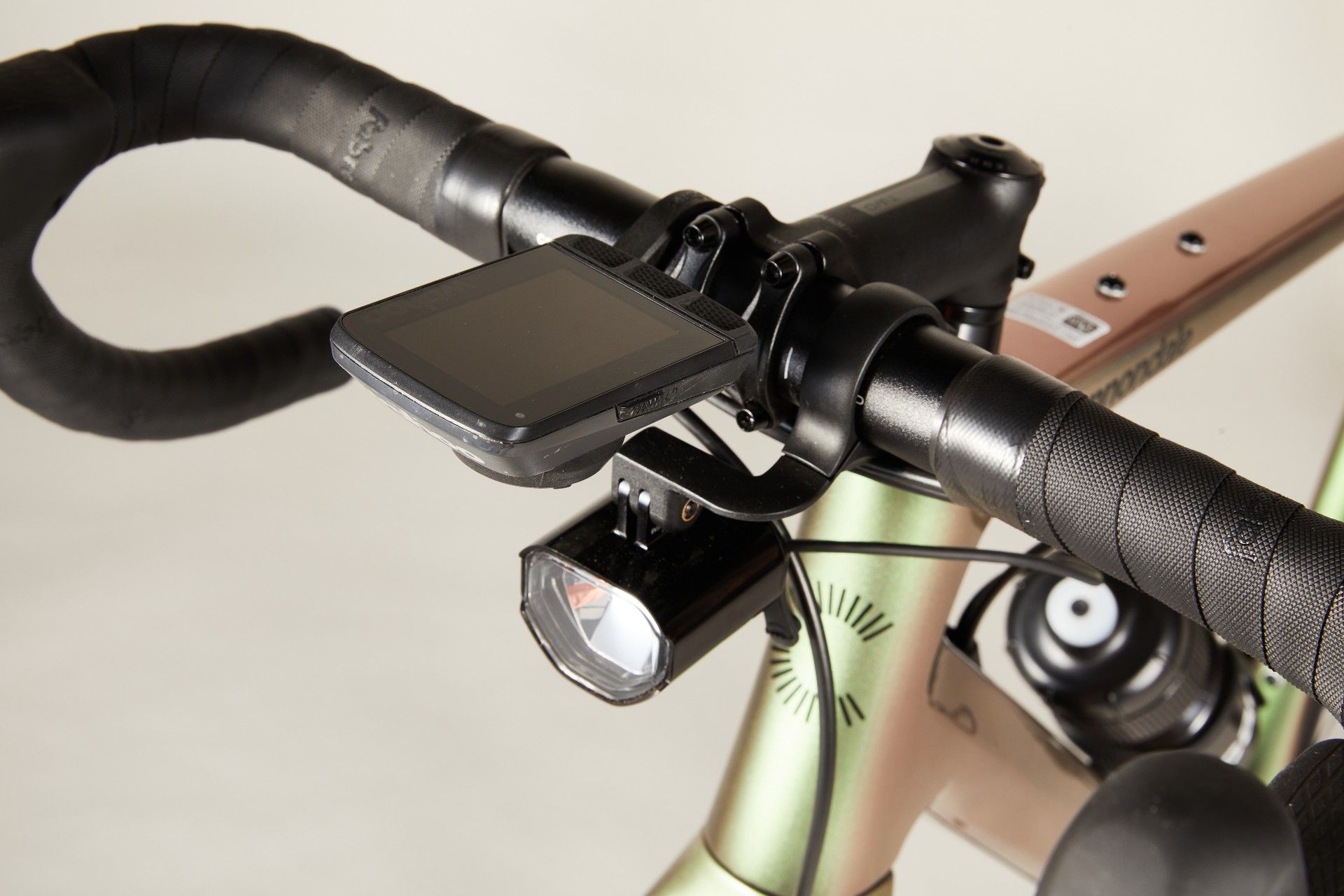
Additionally, the lights need to be external because they also act as junction boxes: if you want to run the Varia head unit for your radar instead of a standard compatible computer, you plug it into a port in the front light. Likewise the rear light and radar are connected.
Our test bike came with the StVZO compliant lights - this is the set of rules governing road traffic in Germany and stands for Strassenverkehrs-Zulassungs-Ordnungs (since you asked). StVZO lights are designed not to dazzle other road users and as such don’t have flash modes, so I didn’t get the same range of configuration options that the international lights will have. Cannondale says StVZO lights will be fitted to early Synapse Carbon models in the UK and Europe with the international lights to follow, and it’s easy to swap types. The light units will be £69.99 front and £44.99 rear.
I had my doubts as to whether a 350-lumen front light would be bright enough for unlit lanes - but those doubts were unfounded. The beam is concentrated on the road light like a square spotlight and is perfectly adequate. It won’t light up the trees around you - it’s like a dipped beam, which is the whole point of StVZO.
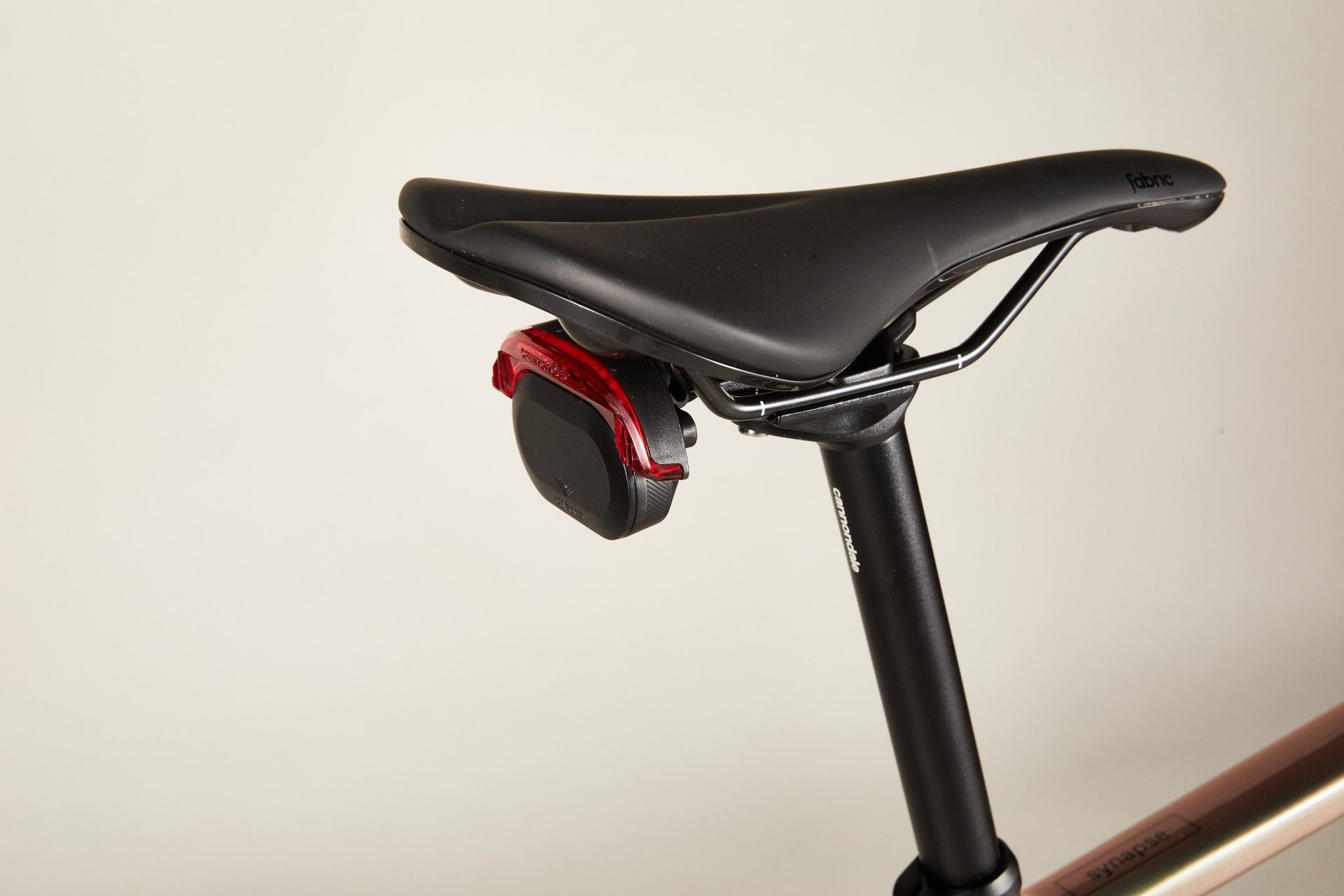
I used a Wahoo Elemnt Roam rather than a smartphone and/or the Garmin Varia head unit, which is just a strip of LEDs, and it was surprisingly easy to add the Garmin radar as a sensor. Garmin and Wahoo are rivals but it seems good sense - or rather SmartSense - has prevailed.
The radar senses a vehicle approaching from 140 metres back. A little car icon, accompanied by a warning bleep, appears at the bottom of the strip to the left of the Wahoo screen. The strip turns from green to orange (or red if the car is approaching fast). As the vehicle approaches the car icon moves up the strip towards the top and as it passes you get a flash of the Wahoo’s top LEDs and an ‘all clear’ bleep and the strip goes back to green.
If you’re on your own, riding normally at the side of the road, radar might not be useful. But riding two abreast at night - when you might not be able to distinguish a car’s headlight from your ride mate’s - it makes the experience so much pleasanter if you don’t have to keep looking over your shoulder and can single out in good time if necessary.
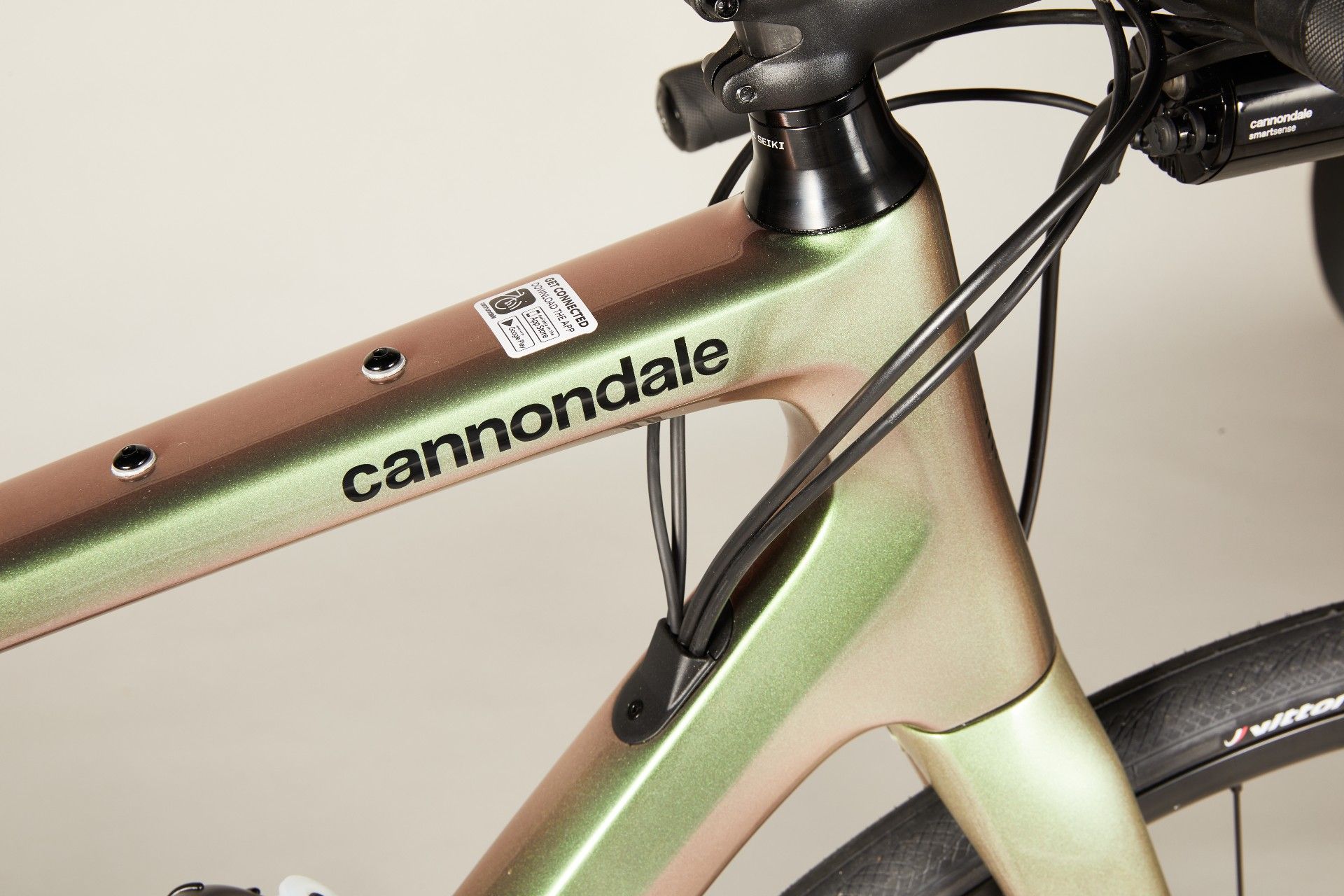
As for the ride experience supplied by the Synapse itself, I’ll admit I wasn’t as blown away as I was when I rode the original Synapse, but that’s because 15 years ago a ‘comfortable’ road bike was unheard of. These days every bike, even the most aggressive race bike, feels much plusher because they all run bigger tyres.
There’s no doubt the new Synapse is comfortable, but in 2022 that’s more down to rider position. The stack of the size 56 was getting on for 60cm, which definitely puts you in a commanding position. I didn’t find the tall front end an issue, but if I was buying this bike for myself I would probably go with the 54cm and fit a longer stem, which would also make the bike a bit lighter.
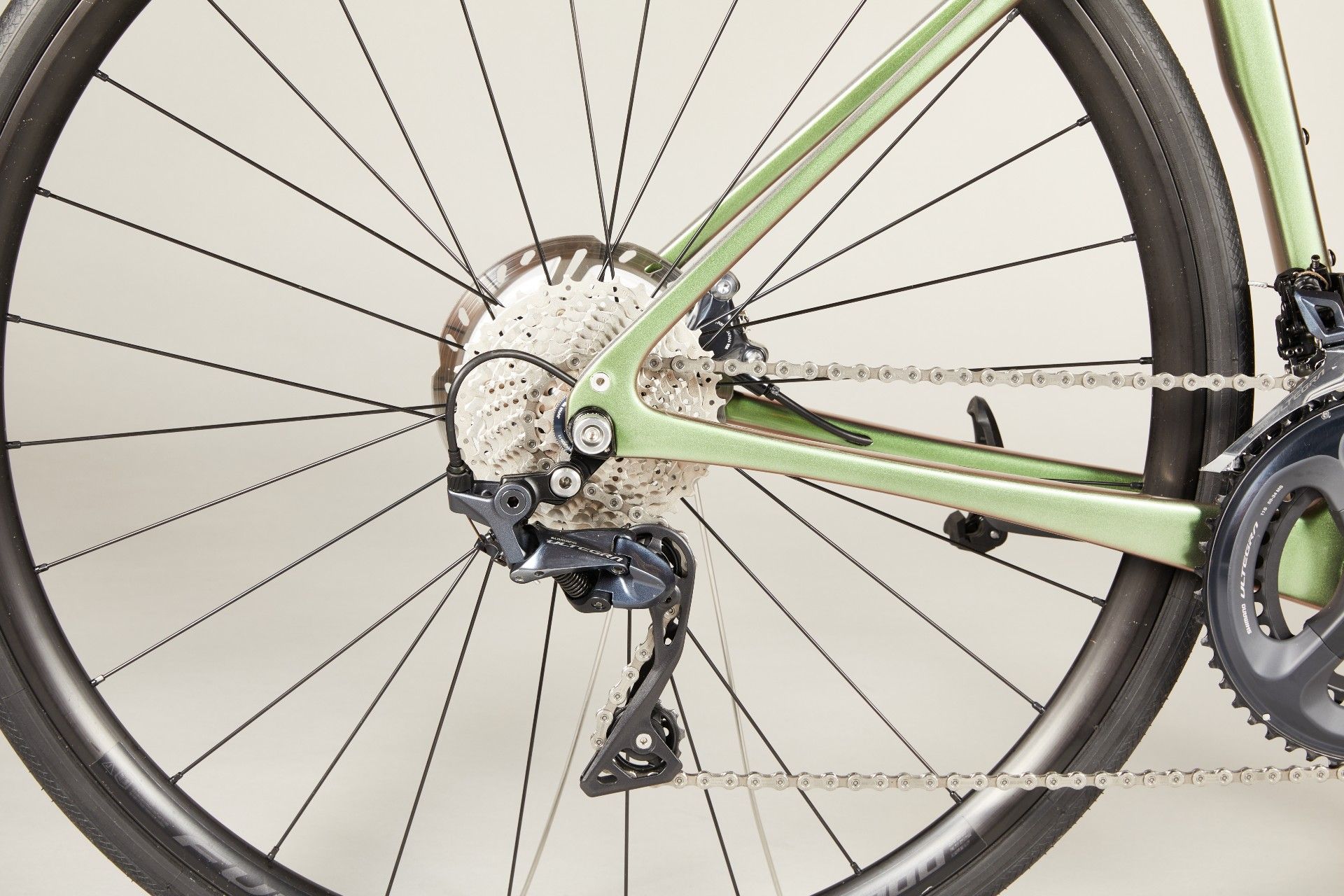
On the subject of weight, 9.5kg puts this Synapse Carbon 2 RL on the heavy side. OK, just under half a kilo is down to the SmartSense system - Cannondale says this is actually 35g lighter than an equivalent set-up of separate components. Another hefty chunk of weight is in the wheels. Cannondale seems to have gone down the same route as most big bike brands in speccing basic wheels to bring this mid-range model in at a pricepoint. The Fulcrum Rapid Red 900 wheels are aluminium and appear to be aimed more at gravel, and the 30mm Vittoria Rubino Pro clincher tyres - again, fairly low down in the range - don’t do them any favours. I found myself looking enviously at the spec of the Synapse 1 RLE with its deep-section carbon Hollowgram 45 SL Knot wheels and tan-wall Vittoria Corsas…
Having said that, it didn’t feel like a heavy bike. As well as that first night ride I’ve ridden it up and down Box Hill twice and several times up the Ranmore Common Hairpin for a video and it responded nicely to harder efforts.
If you wanted a lighter, racier bike then there are plenty around, but Cannondale says this is the right bike for most road riders and you can’t argue with that.
| Cannondale Synapse Carbon SmartSense 2 RL | Header Cell - Column 1 | Header Cell - Column 2 |
|---|---|---|
| Frame | Synapse Carbon SmartSense enabled | Row 0 - Cell 2 |
| Fork | Synapse Carbon 12x100mm thru-axle | Row 1 - Cell 2 |
| Groupset | Shimano Ultegra mechanical/hydraulic disc | Row 2 - Cell 2 |
| Wheels | Fulcrum Rapid Red 900 alu | Row 3 - Cell 2 |
| Tyres | Vittoria Rubino Pro 700x30C | Row 4 - Cell 2 |
| Bar | Cannondale 2 alu | Row 5 - Cell 2 |
| Stem | Cannondale 2 alu | Row 6 - Cell 2 |
| Seatpost | Cannondale 3 SmartSense | Row 7 - Cell 2 |
| Saddle | Fizik Aliante Delta | Row 8 - Cell 2 |
| Weight | 9.53kg (size 56) | Row 9 - Cell 2 |
Value and conclusion
SmartSense will be a gamechanger. Who doesn’t want more convenience and more confidence for their riding? The new Synapse is on the expensive side - this mechanical Ultegra-equipped version is £900 more expensive than the outgoing equivalent Synapse - but is no doubt priced to recoup the R&D costs of designing SmartSense. As Smartsense gets more common prices will come down and we can expect to see this sort of integration on much cheaper bikes.

Thank you for reading 10 articles this month* Join now for unlimited access
Enjoy your first month for just £1 / $1 / €1
*Read 5 free articles per month without a subscription

Join now for unlimited access
Try first month for just £1 / $1 / €1
Simon Smythe is Cycling Weekly's senior tech writer and has been in various roles at CW since 2003. His first job was as a sub editor following an MA in online journalism. In his cycling career Simon has mostly focused on time trialling with a national medal, a few open wins and his club's 30-mile record in his palmares. These days he spends most of his time testing road bikes, or on a tandem doing the school run with his younger son.
-
-
 High-end bikes still in demand says Giant, as it announces 12.5% revenue increase
High-end bikes still in demand says Giant, as it announces 12.5% revenue increaseBut like much of the industry the Taiwanese manufacturer is also experiencing a surplus of low to mid priced stock
By James Shrubsall • Published
-
 Milan-San Remo 2023: Route and start list
Milan-San Remo 2023: Route and start listAll you need to know about the first Monument of the 2023 season
By Ryan Dabbs • Published
